I have something bordering on a fetish for pattern matching dice drafting games, and Sagrada from Floodgate Games is a really excellent example of a game that scratches that itch.
You and up to three fellow players (expandable to a total of 6 players) will compete to make the most beautiful stained glass window from the very finest colours and shades of glass. When we say glass, we’re not talking about a scene involving a winnebago in the middle of the desert, we mean dice with the shades represented by the various numbers on the die faces.
Right out of the neatly organised box (with space for the expansion no less!), you’re greeted with some pretty game boards to represent the windows you’ll be building, a collection of beautiful coloured six-sided dice and a handful of glass tokens. You get a couple of felt bags for the dice and tokens, both of which feel like decent quality material and like they’ll withstand the test of lots of anxious dice-plucking - more on that later!
For me, this game feels like it has just the right level of component quality and quantity to justify a £37 RRP price tag (which you can usually buy for less than £30). This isn’t one of those irritating games where it’s a fight to cram things back in the box after the game either; there’s plenty of space in there without it feeling like a dreaded trench box.
For me, this game feels like it has just the right level of component quality and quantity to justify a £37 RRP price tag (which you can usually buy for less than £30). This isn’t one of those irritating games where it’s a fight to cram things back in the box after the game either; there’s plenty of space in there without it feeling like a dreaded trench box.
I do have one gripe with the packaging and that’s Floodgate’s use of shrink wrap to protect the cards in transit. I was being very careful trying to extract the cards from their plastic entombment and still managed to damage them in the process. When will manufacturers start using recyclable packaging that doesn’t require a bomb disposal tech and all their tools just to get your game ready for that first play?!
Back to the game! Over ten rounds you will take it in turns to roll a batch of dice and then one by one, pick from the pool to fill your beautiful window. There’s a neat little trick here to keep the choices available balanced; starting with the first player, each player, clockwise picks a dice and places it in their window. The last player finishes by picking two and play proceeds anticlockwise. The one remaining dice gets added to the score track and the next round begins. Sounds simple enough right? Well it would be except..
Each player is provided with a blank window, ready for all that lovely colourful glass pattern fitted, but it there will be some exacting requirements that must be met. You’ll choose from four options, dealt from a decent size pack at random that will dictate which drafty holes need specific colours and shades. The boards on offer have varying levels of requirements, making some tougher to fulfil; more risk often means more reward and that is the case here too. Trickier boards do, however, give you more skill tokens which can be spent to tinker with the glass from a randomly selected trio of glassmakers' tools.
On top of the specific restrictions of your board, there’s also some general rules for perfect window design; No two orthogonally adjacent squares must ever have the same shade or coloured pane.
They say beauty is in the eye of the beholder but fortunately Sagrada has somewhat clearer guidelines on the subject; in each game three publicly visible cards are chosen at random to show what traits are in favour. Form a window with unique colours in each column, pairs of similar shades and so on. Trickier combo’s will score you more points.
It’d be boring—like one of those long dry euro’s Andy raves about—if everyone had the same objectives right? To spice things up, you will each be given a secret card that shows which glass colour you (and you alone) will score. Adding up dice faces of that colour in the final scoring can be a major point earner and an important point to keep an eye on.
So to recap, you have some general restrictions, board restrictions, public objective restrictions and private objective restrictions, and you have to keep all that loaded in your noggin while you keep an eye out for what other people might need for their boards. It’s that satisfying balance of trying to keep all these plates spinning that is the crux of what makes this such a fantastically fun game in my eyes.
The game is really well balanced to give you just a little more than you can reasonably fit into your mental collection of rules that the dice you’re picking must conform to. Four or five dice placements into the game you’ll find your hands on your temples as you scan the rows and columns, checking you’ve not messed anything up. By the end of the game you’ll be agonising over every decision and biting your nails that nobody spots it’s that blue dice with the number two on that you absolutely must have.
Game weight wise, this isn’t a long heavy euro but it’s got plenty of short term brain burn that’ll keep you thinking hard.
The game is really well balanced to give you just a little more than you can reasonably fit into your mental collection of rules that the dice you’re picking must conform to. Four or five dice placements into the game you’ll find your hands on your temples as you scan the rows and columns, checking you’ve not messed anything up. By the end of the game you’ll be agonising over every decision and biting your nails that nobody spots it’s that blue dice with the number two on that you absolutely must have.
Game weight wise, this isn’t a long heavy euro but it’s got plenty of short term brain burn that’ll keep you thinking hard.
If you like a bit of chaos, playing with 3-4 players is great fun. Things get a bit more tactical with 2 players as you have a better chance of being able to keep an eye on your opponents window.
Solo play pits you against the sum of discarded dice on the round tracker. You draft four per round and then desperately try and use up all the highest numbers on your board because the leftovers go against you at the end of the game. You can spam a few on the tools (you get five for an easy game or three for a tougher challenge) but if you do so too soon, you’ll find it increasingly difficult to place the last few dice. Personally I’m not a huge fan of solo board game modes but this one makes for an entertaining puzzle.
The rules for the multiplayer game are well written and easy to pick up but a little more ambiguous for the solo game. A couple of simple example pictures showing progress as a single player would have made this much clearer but it’s easy enough to pick up clarifications on dice drafting quantities, how many / where they go on the round tracker and how many should be summed for your target score.
There was some discussion here at PHC HQ as to how well the theme fits this game and there seems to be a bit of mixed opinion. Personally I felt the coloured dice looked very much like a stained glass window and the idea of picking colours based on a customers requirements, using the tools to do the trickier placements all felt like a good fit to me. It’s easy to lose sight of it when you’re scratching your head trying to work out how you can fulfil all those tricky stipulations but when you sit back at the end and look at your, hopefully complete and beautifully constructed, masterpiece, I think you could absolutely picture light streaming through it in the archway of a cathedral.
I took this away with me to a cottage on the west coast of Scotland for a week and it was extremely popular with my group of friends. Easy to teach but tricky to master and after a dozen or so games I still find myself a few moves from the end of the game yelling “No!! Why on earth did I put that yellow five there?!!”.
I can see this game coming back to my table again and again - it’s a corker!
I can see this game coming back to my table again and again - it’s a corker!
This review is based on a full retail copy of the game provided by the publisher.

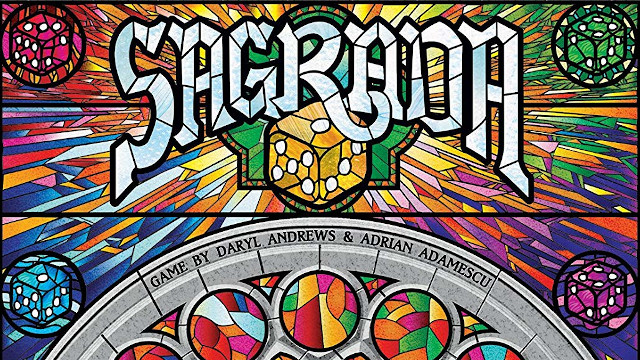
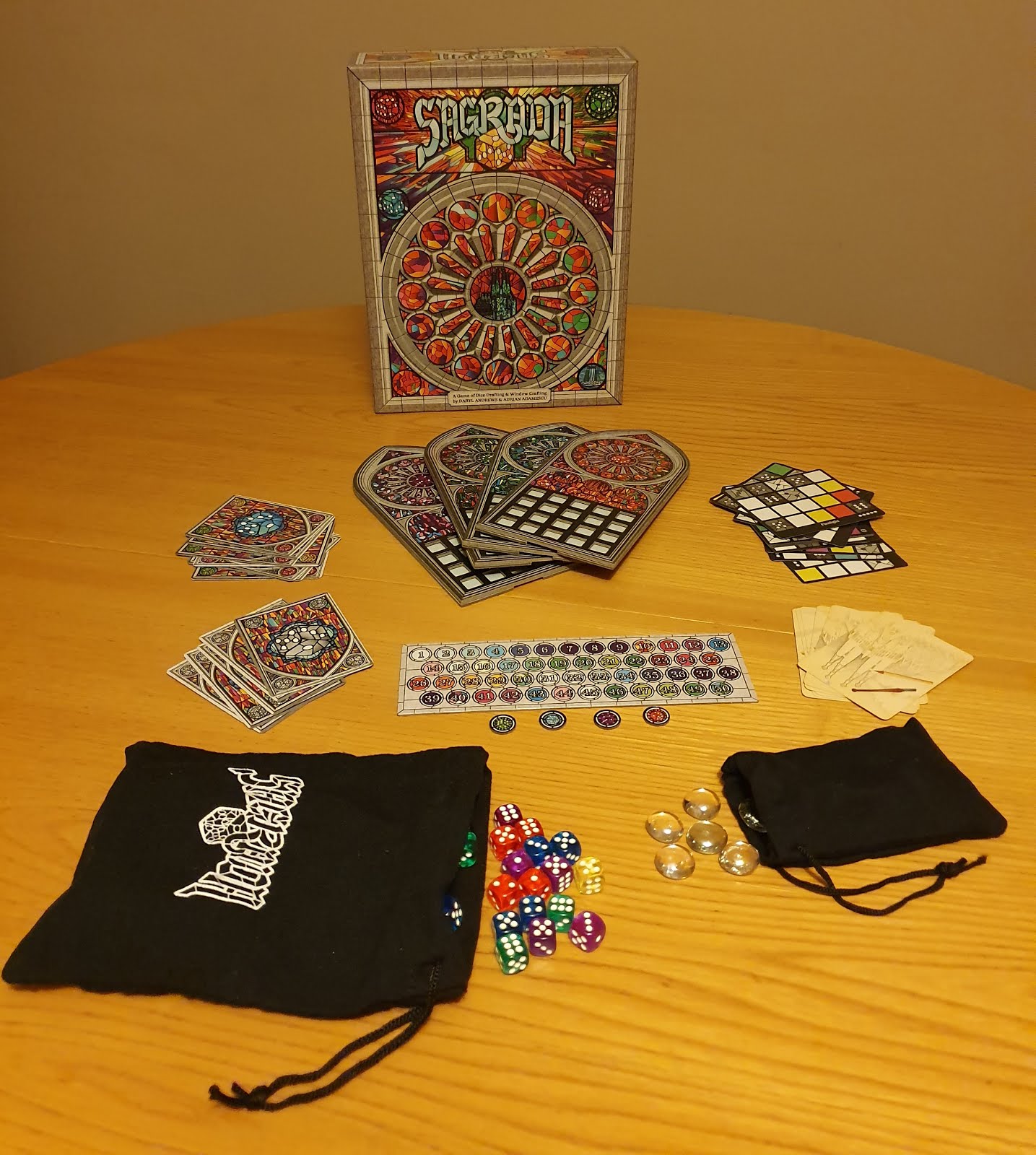
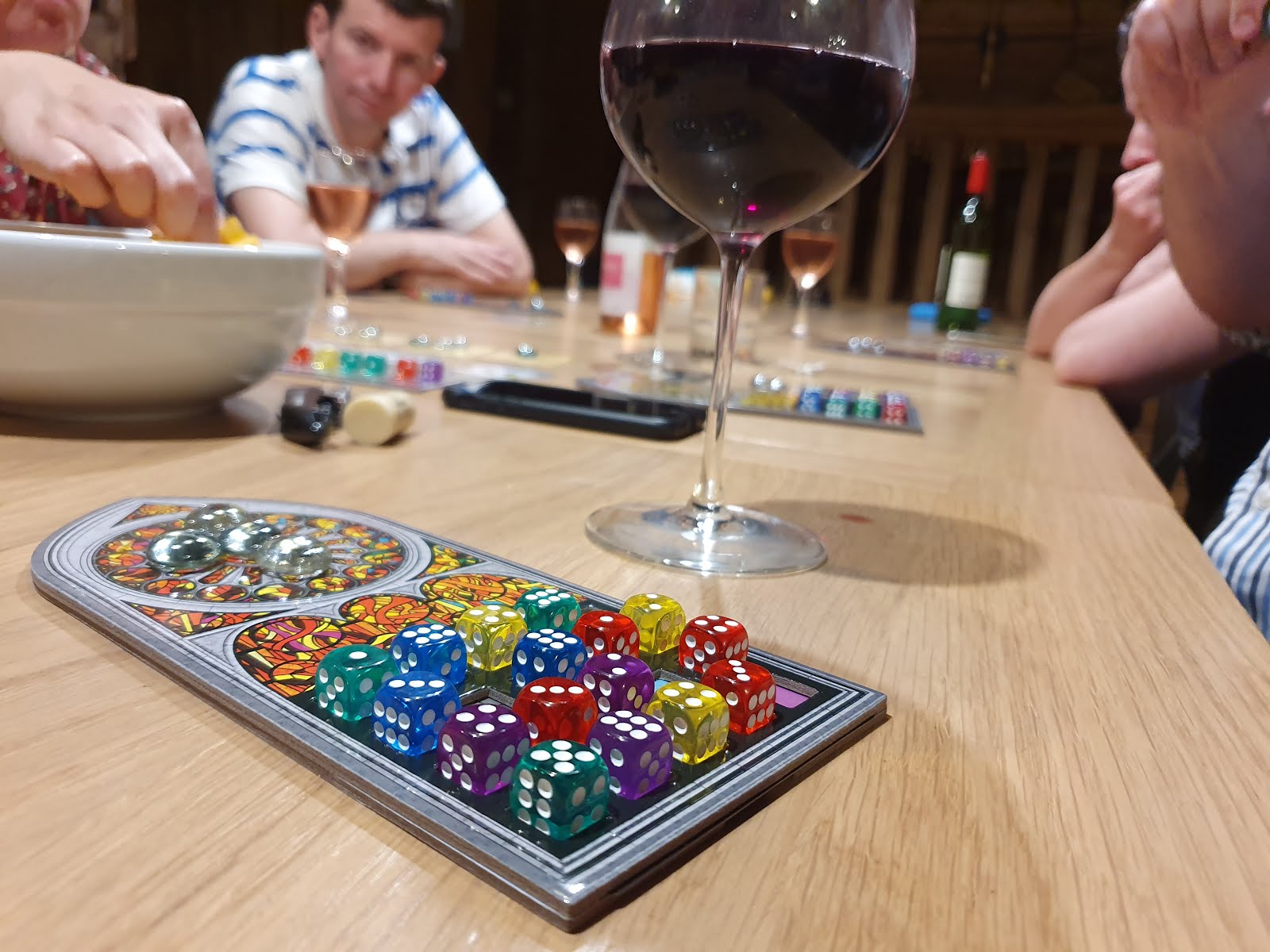



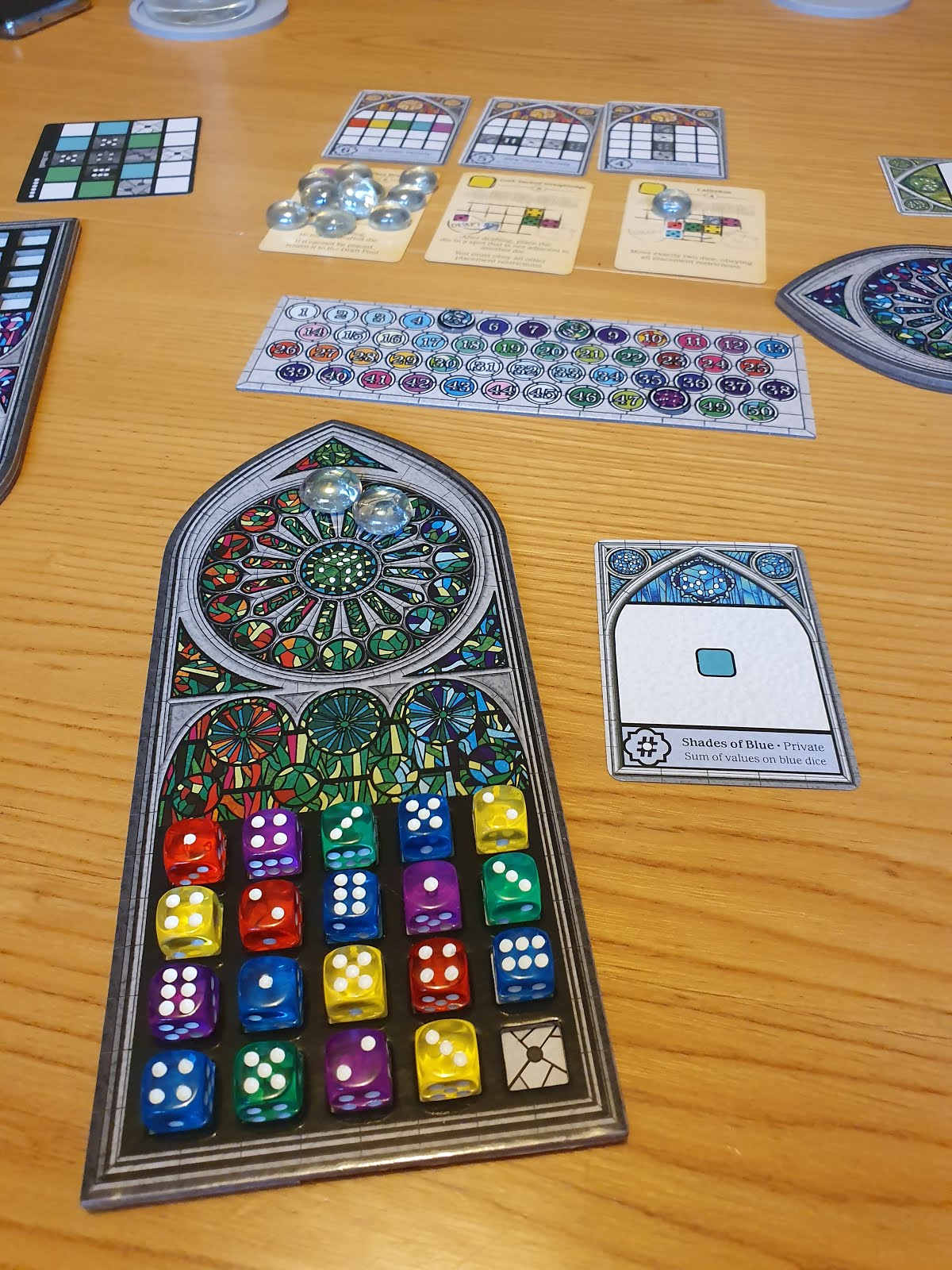
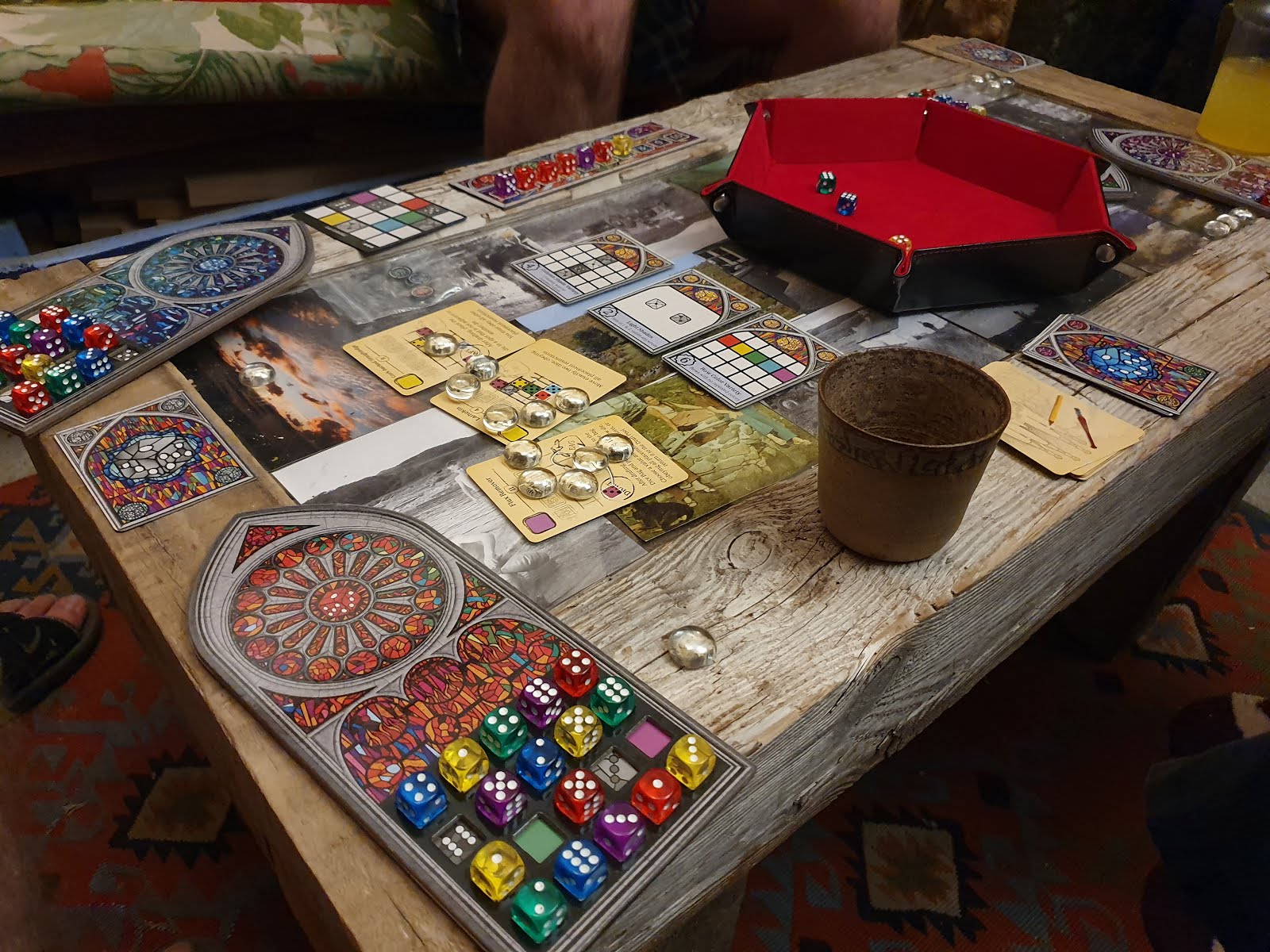











.png)


0 comments:
Post a Comment